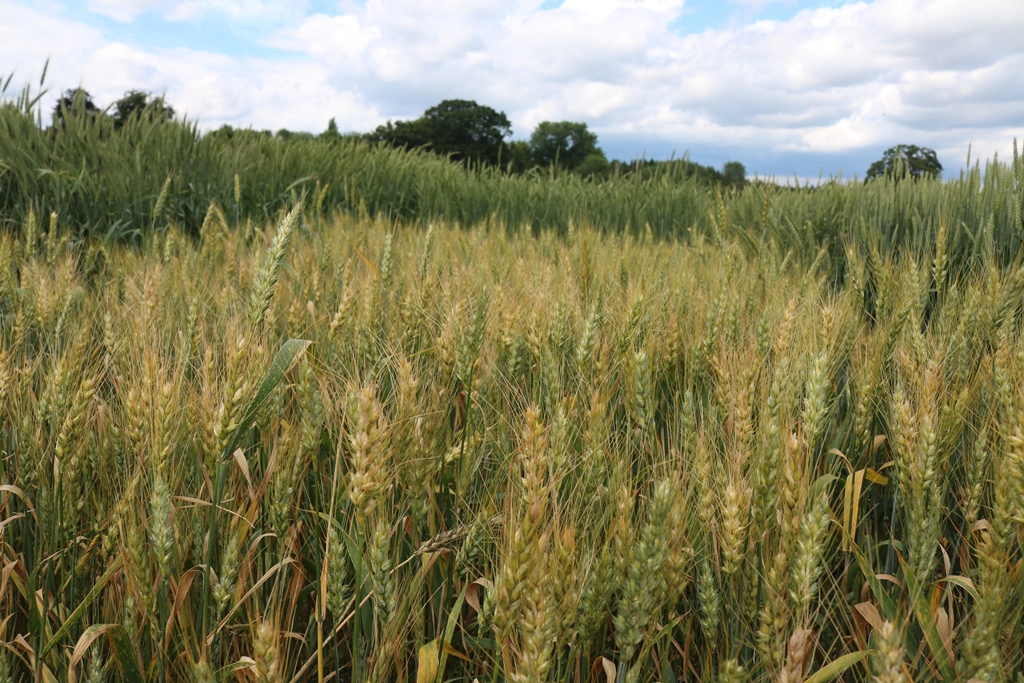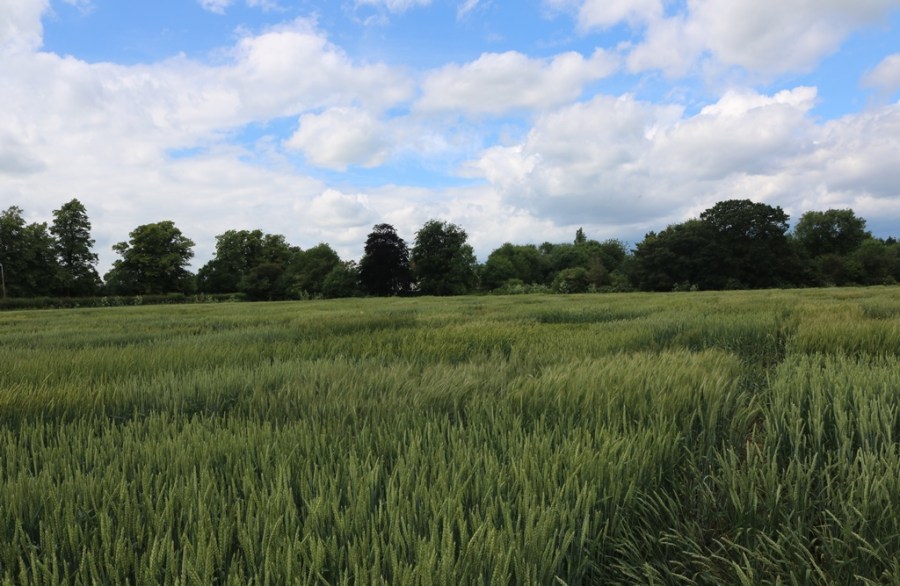A recent open day displayed the progress to date of a major public-funded pre-breeding programme, that brings together leading plant-science researchers. CPM took a look at the field plots of novel wheats and talked to the scientists.
By Tom Allen-Stevens
Of all the trial sites to visit this summer, the field plots on display at the Designing Future Wheats (DFW) open day, near Harpenden, Herts, contain perhaps the oddest selection of varieties you’re likely to encounter.
All manner of shapes and sizes can be viewed – tall and short, awned, compact, open – some standing majestically stiff and other plots hopelessly lodged. The diversity is mind-bending.
And that’s kind of the point. The aim of the programme is to deliver new, useful genetic variation and knowledge to breeding. Funded by BBSRC, it’s brought together scientists from JIC, Rothamsted Research, The Earlham Institute, University of Bristol, EMB-EBI, NIAB, University of Nottingham and Quadram Institute of Bioscience. In addition the whole host of UK wheat breeders are involved, on the Breeders Observation Panel, as well as picking up the fruits of the research.
DFW has been increasing the diversity of traits available to these breeders, looking at landrace varieties, synthetic hexaploid wheats and wild relatives to introduce novel germplasm and bring back useful traits lost from modern varieties.
“There’s been a major step change in wheat research in a number of areas,” notes Prof Graham Moore of JIC, who leads the programme. “The wheat genome is now sequenced and the known expression of every gene is on the database and publicly available.”

The DFW plots include wheats introgressed from landrace varieties, synthetic wheats and wild relatives to introduce novel germplasm and useful traits.
This includes sequencing information from wheats developed through TILLING (Targeting Induced Local Lesions in Genomes) as part of DFW. This is a form of chemical-induced mutagenesis, similar to CRISPR, but not subject to GMO regulations in the EU. Using these approaches, 40 resistance genes have now been identified, says Graham.
“With speed breeding we can now rapidly cycle populations within the glasshouse. And we have the ability to study these populations in a different way in the field, using the field scanalyzer at Rothamsted for high-throughput phenotyping.”
Particularly promising germplasm is multiplied and trialled by commercial breeders and at scientific institutions, provided through a breeders’ diversity toolkit. This comprises pre-breeding germplasm with information on interesting traits and genetic markers to help breeders identify these. “Having a single co-ordinated programme has allowed the UK to have a seismic impact on the international plant-science scene,” notes Graham.
Some of the most promising lines in the programme come from the Wheat Research Centre at Nottingham. The centre has introgressed two wheat wild relatives Ambylopyrum muticum and Triticum Urartu, transferring the entire genome of both into wheat. The first 22 introgression lines, stabilised by a doubled haploid procedure and released in 2017, are on display in the plots.
“We’re seeing some good results, with some of the lines showing potential for high zinc, photosynthesis and resistance to leaf rust and yellow rust,” notes Nottingham’s Dr Julie King.
A very small difference in root architecture can make a big difference in how a wheat takes up water, according to work presented by Dr Richard Whalley of Rothamsted. He’s been studying the rooting ability of 39 wheat lines, through taking soil cores and measuring root length density – the minimum length of root in a unit volume of soil needed to extract all the available water being 1 cm/cm³. The study includes lines derived from the Watkins collection – land race wheats collected around 100 years ago.
With an estimated 43% of children and 29% of women of reproductive age having anaemia, with half of this resulting from iron deficiency, wouldn’t it be great if a staple food source could be bred that supplied adequate iron in the diet to prevent this? Similarly, approximately 155 million children globally suffering stunted growth due to a deficiency.
“So far types of wheat that deliver double the amount of zinc have been developed in Mexico, but conventionally bred lines that provide more iron are not available,” reports Prof Peter Shewry of Rothamsted. “However, even these lines are not ideal as the minerals are concentrated in the bran and may be poorly available to humans.”
Work at the JIC and Rothamsted is therefore focusing on increasing the amounts of available zinc and iron in wheat endosperm, to result in higher levels in white flour.
“We know both elements are transported across the developing grain so the key may be to identify and manipulate transporters to change their destination,” he notes.




